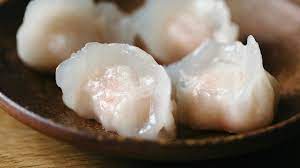Dumplings
Origin of Há Cảo (Shumai) Dish
Shumai, also known as Há Cảo, is a popular traditional Chinese dish that has gained worldwide popularity. This savory dumpling is typically filled with a mixture of ground pork, shrimp, and various seasonings. Shumai is known for its distinct shape, which resembles a flower when steamed, making it visually appealing.
The origin of Shumai can be traced back to ancient China, where it was believed to have been created during the Tang Dynasty (618-907 AD). The dish was initially served as a delicacy in the imperial court and was later introduced to the general public, becoming a staple in Chinese cuisine.
Shumai has evolved over time, with different regional variations and adaptations. In Cantonese cuisine, it is often served as part of the dim sum spread, where it is steamed and served in small bamboo baskets. In other regions, the filling and seasonings may vary, incorporating ingredients like mushrooms, water chestnuts, or even fish.
The popularity of Shumai has spread beyond China, and it is now enjoyed in various Asian countries and around the world. It can be found in dim sum restaurants, street food stalls, and even in frozen form in grocery stores.
Whether you enjoy Shumai as a standalone snack or as part of a larger dim sum feast, its delicate flavors and enticing presentation make it a beloved dish for many.

